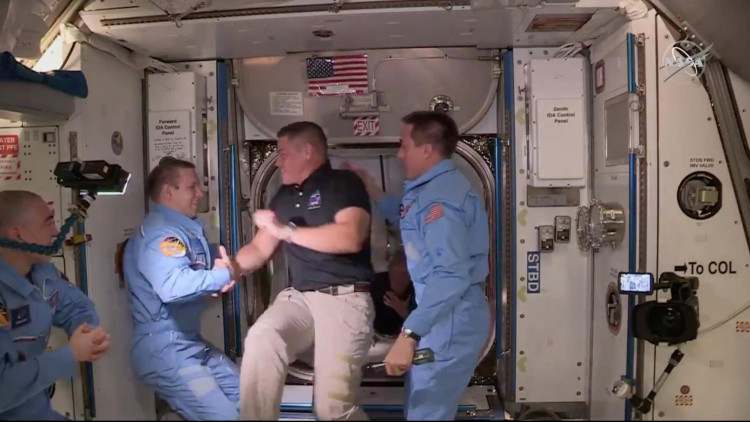On Sunday morning, 19 hours after the joint SpaceX-NASA launch, American astronauts aboard the Dragon Crew docked safely at the International Space Station.
At around 10:16 a.m. (Eastern time), the Crew Dragon space module carrying veteran NASA astronauts Douglas Hurley and Robert Behnken rendezvoused with the ISS - 262 miles above the China and Mongolian border.
The SpaceX Crew Dragon spacecraft pulled up to the ISS and docked automatically, with no assistance required, with test pilots Hurley and Behnken ready to take over manual control if the need arises. Moments later, the hatches flung open, and the two Dragon pilots drifted into the orbiting facility and greeted residents of the three space stations.
The epic voyage marks a significant feat in NASA's determination to settle the space program's dependence on Russian Soyuz spacecraft to deploy astronauts to and from the ISS, the first manned flight into orbit by a privately-owned and operated space vehicle since the beginning of space exploration.
Like the Dragon 1, the manned version is a capsule design, making it almost the same as the Apollo capsules that carried astronauts to the Moon than the winged NASA space shuttle design, which was developed to transport both crew and heavy cargo.
From launch up until moments prior to re-entering the Earth's atmosphere, the module is attached to a trunk equipped with solar panels, heat-removing radiators and fins for stability in case of an emergency abort. The capsule and trunk stand approximately 26.7 feet, with a diameter of 13 feet.
John Federspiel, Director of Starlink User Terminal Engineering at SpaceX, explains that the Crew Dragon is "a space vehicle that is all about safety and dependability," as written by Paul Rincon, Science editor, BBC News.
According to SpaceX CEO Elon Musk, when the capsule returns to Earth, the Crew Dragon can't simply land on a runway like the NASA space shuttle does. "I think there is an argument that the return is more dangerous than the ascent," he said.
Hurtling into orbit at over 17,500 miles per hour, the Crew Dragon space vehicle was able to locate the ISS in around the same amount of time that it takes for a passenger plane to travel from New York to Australia. But the docking procedure was performed very smoothly and carefully.
Meanwhile, unlike NASA and SpaceX flight control rooms, where people was spaced well apart, there was no social distancing or face masks required in orbit since the arriving astronauts had been in isolation for many weeks while on Earth.






